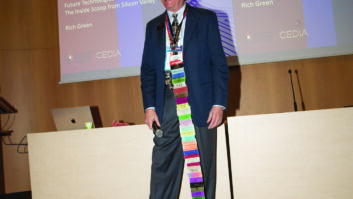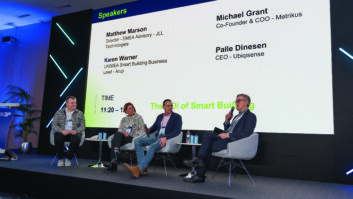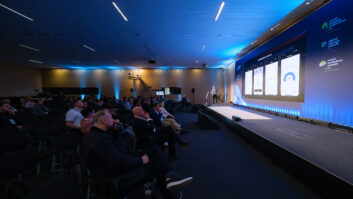With so many conference phone systems to choose from and so many variations in room size and acoustic characteristics, the task of choosing the right conferencing solution may seem daunting. Help is at hand from Polycom. The maturing of conferencing systems over the last several years means that new technologies and new designs are embodied in a range of systems. This allows for models that are optimised to meet the price and performance goals of different room environments and different user interface requirements. The challenge is to make sure that the selected model will meet the needs of the specific room environment where it will be installed. Selecting a conference phone with enough microphone pickup to cover the entire room is critical in ensuring that everyone can be heard, especially during dynamic and fast-moving conversations. However, keep in mind that one important rule to maximize the performance of a voice conferencing system is this: the closer the microphone is to the mouth, the better. No matter what the pickup range of a single microphone may be, as the microphone gets farther from the talker, it’s more likely to pick up noise and room echo. To keep fatigue down and understanding up, if you have someone who you expect to be the most frequent contributor to a conversation, seat them within a few feet of a microphone. If you can’t get them near the console, you can use extension microphones such as those available with the Polycom SoundStation VTX 1000 and SoundStation IP 7000 (pictured top). Following this rule will pay off richly in comfort and consistency during long meetings. Each conferencing environment has its own acoustical challenges that require an appropriately designed conferencing solution. Let’s examine some of these differences. @page_break@
The small office, home office or very small conference roomThis is a relatively small room or office that seats up to four participants. It may have clutter, too many chairs for its modest size, and a low or normal height ceiling. However, this kind of room can deliver some of the best voice conferencing experiences. The chairs and other items cut down possible echo. The small size also forces the talkers to remain close to the microphones, and it places them closer to the loudspeaker. A conference phone with five to seven feet of microphone coverage will satisfy user expectations in most of these environments. Polycom’s VoiceStation conference phones offer an ideal solution when this type of room has an analogue phone connection, while the SoundStation IP 5000 (above) is a good fit for these smaller rooms in environments where the network is SIP-based VoIP. The standard conference roomThis is a more conventional conference room or large office that seats up to 10 participants. The larger size of this room means that there will be additional acoustic challenges (air vents, more participants, more room echo, and noise) that were not present in the smaller room described above. To their credit, however, these rooms typically have carpeting, an acoustical eight-foot ceiling, furniture, drapes, and some wall hangings that all work together to keep the echo under control. The smaller rooms in this range should be equipped with a conference phone that has 10-12 feet of microphone coverage. Medium and larger conference rooms will require a unit that includes the ability to attach expansion microphones (EX) to fully cover the area. A new generation product such as the Polycom SoundStation2 EX (analog) or SoundStation IP 6000 (VoIP), which can add optional expansion microphones, is ideal for many standard conference rooms.@page_break@
At a room size of 20 x 30 feet or larger, we reach an inflection point. While this range is within the abilities of the SoundStation2 EX or SoundStation IP 6000 conference phone with expansion microphones, a more powerful conference phone such as the SoundStation VTX 1000 (analog) or SoundStation IP 7000 (VoIP) will deliver a better experience in this environment. The reason is that the SoundStation VTX 1000 and SoundStation IP 7000 (above) perform independent echo cancellation and gain management for each microphone, including the expansion microphones. This capability becomes critical for a room of this size. An older or conventional conference phone cannot independently optimize all of the acoustic parameters, which results in more noise, more echo, and more interruptions in conversation. Some businesses try using a newer but less capable conference phone in these rooms, but this approach provides far less satisfactory results because their algorithms lack the independent pickup and control for larger rooms. The sound will be noisier, less clear, and participants will find it harder to stay focused. In these larger but acoustically friendly rooms, it is also important to understand the behavior of the participants. If talkers will generally be located near the microphones, the more powerful SoundStation VTX 1000 and SoundStation IP 7000 conference phones, with expansion microphones and 20- foot microphone reach, is a good choice. This will provide primary quality sound across a 30- foot span and reasonable coverage for the occasional talkers within a 50-foot diameter. But if the primary talkers are spread throughout the room or tend to move around, it is time to consider an installed audio conferencing system. The board roomA large or very large conference room, often running 25 x 45 feet or larger in one or both dimensions, is often designed more for looks than for good sound quality. Its acoustics can suffer due to factors such as large open spaces, hard surfaces, and multiple panes of decorative glass. These rooms often include chairs along a side wall and a worktable or two in the corners. Great sound quality is needed throughout the room and not simply around the main conference table. This type of room is too big and too distributed for a tabletop system. An installed audio system (such as Polycom SoundStructure) is needed, because it can accommodate as many microphones as are required to give each talker the clarity and performance they and the listeners require. Such a system can be precisely tuned to overcome the unique challenges of the room acoustics, and will also look “cleaner” because of its ability to work with a much wider variety of microphones and longer (and better concealed) cables.@page_break@
The offsiteThis is a large room with multiple sixfoot rectangular tables arranged in an “L” or “U” shape. This type of environment is commonly found in hotels and conference centers. The room is big, but does not have much echo due to its padded sliding room partitions, acoustic ceiling, and carpeted floor. The noise levels are also relatively low. With these longer “L” or “U” shaped designs, the challenge is to achieve good sound pickup for everyone at the table, while also providing enough volume for everyone to hear the conversation. Polycom’s most advanced conference phones, the SoundStation VTX 1000 (above) and SoundStation IP 7000, provides the capabilities, options and accessories to deliver a great conferencing experience in this environment. In addition to their audio processing, noise reduction, gain management, and echo cancellation, they include a powerful internal loudspeaker and an output speaker port (optional on the IP 7000) capable of driving a full room-size distributed loudspeaker system, including the speaker systems found in many of these rooms. They can use all of these features while maintaining an excellent full-duplex connection over a standard phone or IP network line. A small offsite setting, such as a “U” table configuration built from three tables along each arm, can be served by a SoundStation VTX 1000 or SoundStation IP 7000 positioned in the center. Because these conference phones have a 20-foot microphone pickup range, having all talkers well within this range means that this very simple configuration will provide a good conferencing experience. If closer microphone placement is needed, adding the optional expansion microphones provides a total of five independent microphones and better performance. This variation would be helpful when the room is noisier or is more susceptible to echo. Note how the expansion microphones are oriented – they are pointed outward. This gives good pickup to all of the talkers. As the room grows larger and the tables longer, the conference phone can be extended by using longer expansion microphone cables (up to 15 feet). If there is a primary talker, such as a seminar leader, they can use a wireless lapel microphone that connects directly to the SoundStation VTX 1000 or SoundStation IP 7000. With so many conference phone systems to choose from and so many variations in room size and acoustic characteristics, the task of choosing the right conferencing solution may seem daunting. The good news is that today’s technology coupled with the knowledge conveyed in this paper should make these choices far easier. When there is a choice between an analog network connection and an IP VoIP connection, it is highly recommended that the latter be selected. One reason for this is that all VoIP Polycom conference phones today support HD Voice, also known as wideband audio, which delivers much more of the sound of the human voice over the network connection. Where an analog phone carries only one-sixth the bandwidth that the ear can hear, a VoIP phone, depending on its model, will deliver from two to six times that. Especially in speakerphone applications, this makes a dramatic improvement in intelligibility and ability to identify who’s talking, while substantially reducing fatigue. Conclusion The world of voice conferencing has evolved significantly over the past decade, and a new generation is now available with models that can much better meet the unique challenges of the conferencing environments found in today’s global businesses. The key to success is understanding the unique challenges of each room and selecting the conferencing solution that will result in the best possible conferencing experience for parties on both ends of the call. The apparent simplicity of a conference phone often disguises the complexities inherent in creating the ultimate conference experience. Hopefully, this paper has equipped you with the insight and the tools needed to better plan and deploy your voice conferencing equipment. www.polycom.com







